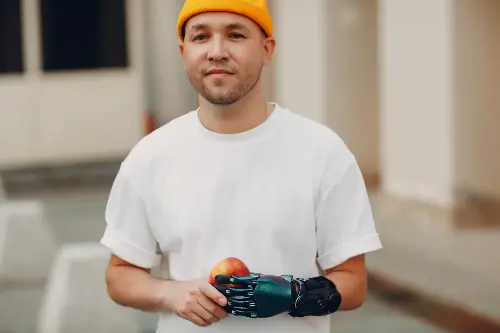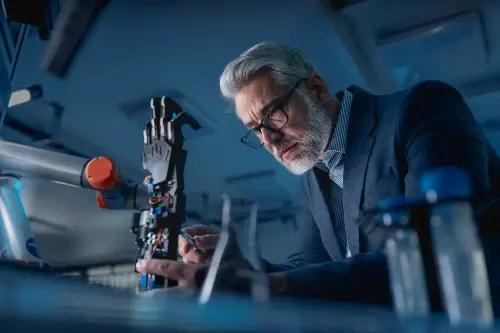For centuries, the quest to enhance human capability through technological means has been a progressive journey, dotted with significant milestones. At the forefront of this journey today are robotic prosthetic hands, which are not only transforming the lives of amputees and those born with limb deficiencies but also redefining the possibilities within the field of prosthetics and beyond.

The Rise of Robotic Prosthetics
The narrative of modern prosthetics cannot be told without applauding the growing sophistication of robotic hands. These devices, empowered by the convergence of robotics, artificial intelligence, and materials science, offer a level of functionality and realism that was once the stuff of science fiction. Unlike traditional prosthetics, robotic hands are designed to replicate the abilities of a human hand with great precision—from grasping and holding to moving in a way that mimics human gestures.
The most significant advancements in this field have come from the study of human biomechanics combined with the latest innovations in robotics. Sensors placed on the residual limb of the user can detect minute muscle, nerve, and EMG (electromyography) activity, which are then translated into movements by the prosthetic hand. This has opened new avenues for users, helping them regain independence and significantly improve their quality of life.
Current models such as the i-Limb by Touch Bionics and the Michelangelo Hand from Ottobock demonstrate incredible responsiveness and multiple grip patterns. These allow users to perform complex tasks that were previously challenging, like typing, playing certain musical instruments, or even handling delicate objects such as eggs or paper.

Material and Sensory Advancements
The stride in materials science also plays a crucial role in the development of these futuristic limbs. Lightweight yet durable materials such as advanced polymers, carbon fibre, and sometimes even titanium ensure that prosthetic hands are not only robust but also light enough for everyday use.
Moreover, researchers are pushing the envelope in sensory technology by integrating haptic feedback systems into prosthetic hands. Such systems convey information about touch or force back to the user, thereby enhancing the interaction with their environment. Fiction is turning into reality as users can now experience sensations when they touch or hold objects, a vital feature that supports more natural use of the hand.
Bridging Challenges with Innovation
Despite remarkable advancements, creating a robotic hand that perfectly mimics human anatomy and functionality still poses several challenges. The precise control of individual fingers remains a daunting task, considering the complex coordination and force modulation needed to mimic the hand’s delicate movements.
Battery life and weight are other obstacles that impact usability and comfort. However, continuous improvements in battery technology and component miniaturisation are addressing these challenges, hoping to provide longer-lasting and more comfortable solutions for users.

Future Potential and Beyond
Looking forward, the potential of robotic prosthetic hands stretches well into various domains. One of the most anticipated advancements is the further integration of AI. As AI becomes more sophisticated, so too will the algorithms that govern the movements of these hands, leading to prosthetics that can learn and adapt to their user's habits and preferences.
Neural interfacing, another exciting frontier, involves connecting the prosthetic directly to the human nervous system to achieve control that mirrors natural limb movement. Recent studies and trials on targeted muscle reinnervation and sensory feedback implants have shown promising results that could revolutionise the effectiveness and feel of prosthetic hands.
The Impact on Society
The implications of these advancements extend beyond individual users. Robotic prosthetics represent a significant step forward in healthcare technology that promises better patient outcomes, reduced medical costs, and potentially broader societal shifts in the way we view and integrate technology with human capability.
Robotic hands are also significantly influencing the STEM fields by providing a concrete application for cutting-edge research and inspiring a new generation of engineers, developers, and medical professionals. Moreover, as these technologies develop, they also spark important conversations around ethics, policy, and access, ensuring that innovation benefits all of society.
As we continue to explore and push the boundaries of what's possible, robotic prosthetic hands stand as a beacon of technological and humanitarian progress. They are a testament to human ingenuity—an interplay of medicine, engineering, and artistry that not only transforms individual lives but also powers the collective wheel of technological evolution forward. Tomorrow looks promising, indeed, with the melding of humanity and robotics forging paths previously unimagined, making today's miracles tomorrow's realities.
